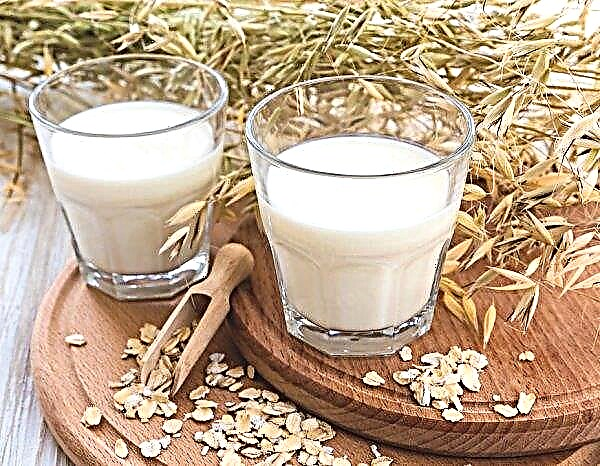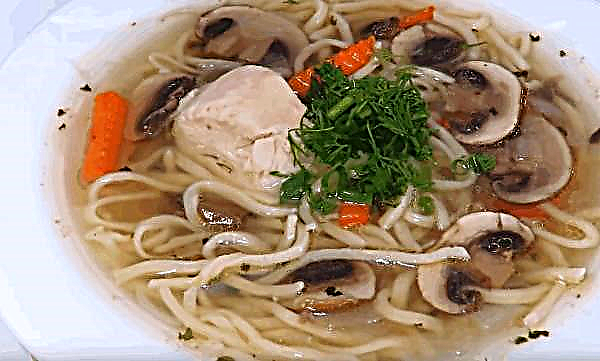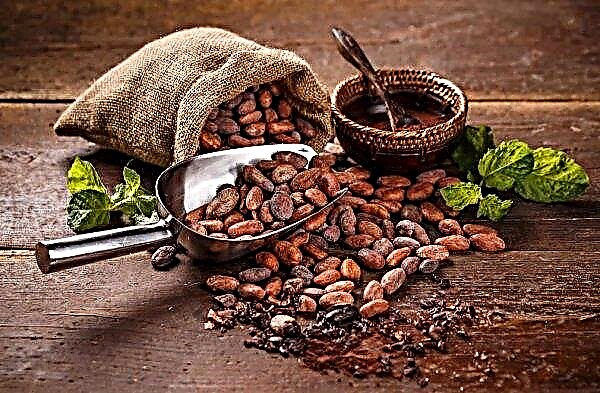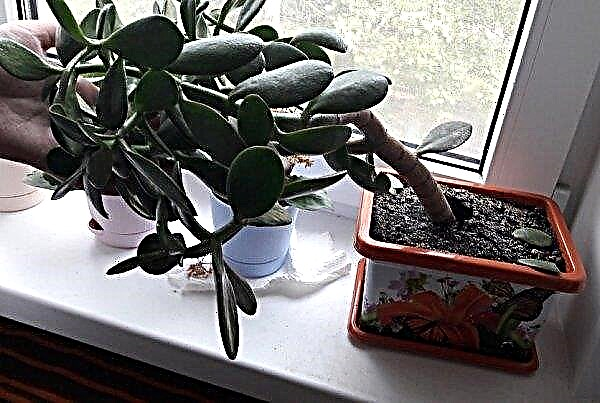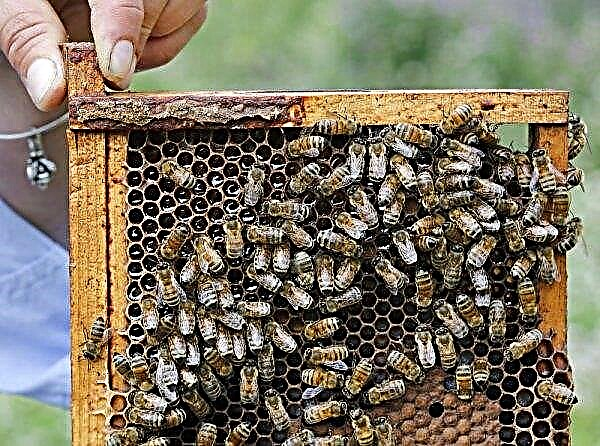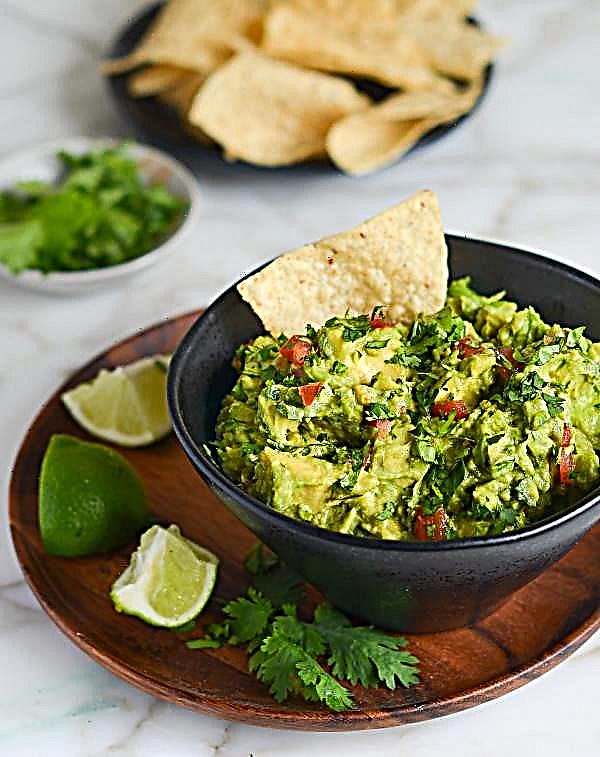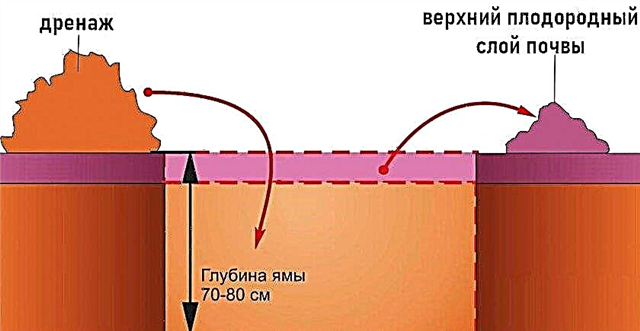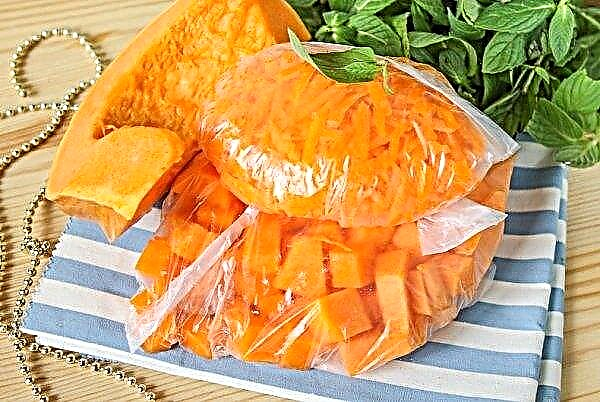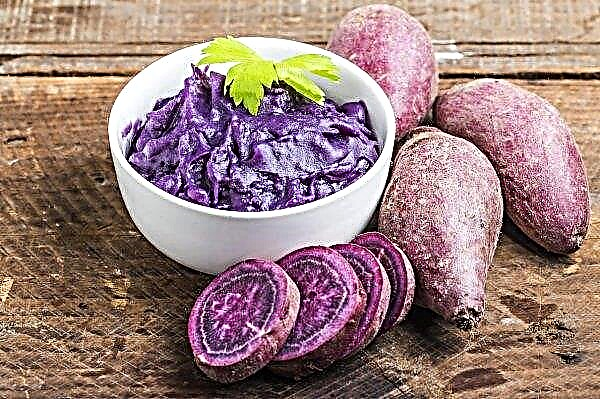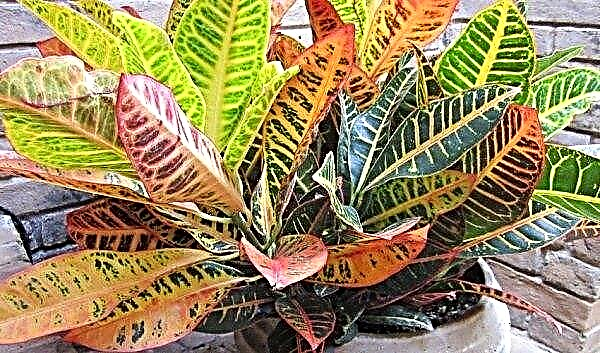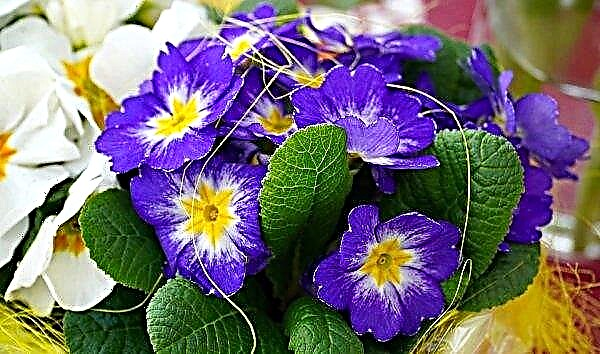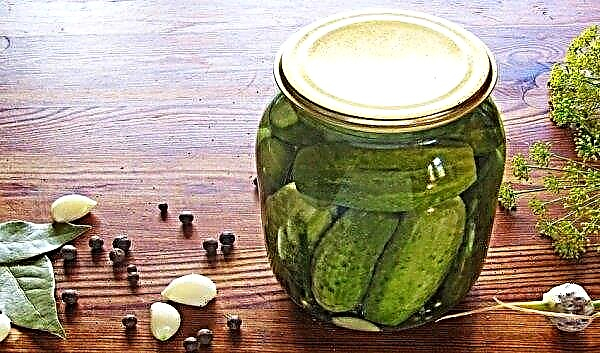Nut has an ancient history and, due to its properties, has found widespread use not only in nutrition, but also in medicine. It can also be grown in a personal plot, it is enough to study its features and care requirements.
Origin of the variety
Other names of the plant are “Turkish peas”, “chickpeas mutton”, “nohut”. Nut was known in the Middle East already 7.5 thousand years ago. Since the Bronze Age it is found in Rome and Greece.
Did you know? In Latin, chickpeas were called “cicer” and probably the name came from the name of the Roman philosopher Cicero, whose ancestors could cultivate this culture.
In the modern world, the plant is cultivated in 30 countries, and 90% of the crop area is in Asia.
Plant description
Chickpea is an annual herbaceous plant in the legume family.
| Bean shape | oval, swollen |
| Pea shape | round, like a ram’s head, wrinkled |
| The taste of peas | with a nutty tint |
| The smell of peas | when cooking, it can smell characteristic |
| Colour | shades of yellow, there is dark green and brown |
| Stem | erect, branched from the middle, with pubescence |
| Leaves | unpaired, small, with teeth |
| Height | 20–70 cm |
One bean contains 1-2 peas. In addition to the traditional variety with yellow peas, there are varieties with brown and dark green that are popular in India.
Chemical composition
Seeds (peas) are the source of many trace elements:
- zinc and folic acid;
- potassium and phosphorus;
- iron, sulfur and cobalt;
- Selene.
High nutritional value is due to the high protein content of 20-30%. Chickpeas contain 50-60% carbohydrates, about 7% fat (mainly polyunsaturated), lysine, vitamins B1 and B6. Nutritional value is 364 kcal per 100 g.
Beneficial features
- Chickpeas have become a popular food product due to a number of useful properties:
- a high percentage of protein, which is easily digested and can replace meat;
- contains essential amino acids;
- contains rare selenium;
- low glycemic index makes it a suitable product for diabetics;
- can be used for gluten intolerance;
- in folk medicine it is used to treat bronchitis, with eye diseases and to cleanse the body;
- growing chickpeas enriches the composition of the soil.
All of these properties apply to both yellow and dark appearance.
Harm and contraindications
- There are contraindications for the inclusion of chickpeas in the diet:
- individual intolerance;
- diseases of the bladder, kidneys and gall bladder in the acute phase.
There is an increase in gas formation, which is why it is recommended to avoid chickpeas for older people and small children.
How to choose the right chickpeas
When choosing a product, they are guided by its appearance. Peas should be the same size, smooth and whole. The color of chickpeas is uniform, without spots.
Planting and growing at home
Chickpea is self-pollinating, which simplifies its cultivation in the garden. It tolerates low temperatures and summer drought, so it has been successfully growing in various regions. Adhering to the main recommendations, to plant and grow this culture is affordable even for beginner gardeners.
Location and climatic conditions
For sowing, any open sunny area that needs to be cleaned of perennial weeds is suitable. Chickpeas can be grown after any culture, and he himself will become one of the best predecessors for most plants.
Did you know? The root system of the plant includes nodules with nitrogen-fixing bacteria that increase soil fertility and increase the yield of the following crops. Chickpeas are often used for green manure.
Sowing is carried out in early spring, when the soil warms up to +5 ° C. Late autumn sowing is also possible in regions with moderate winters. The culture can winter in the form of seedlings under the snow, keeping the temperature up to –25 ° С for a short period.
After the snow melts, the sprouts can endure a cooling down to –16 ° С, and adult plants withstand –8 ° С. During flowering and setting beans, the optimum temperature is +20 ... + 22 ° C. The culture is characterized by increased drought tolerance, and excessive humidity can lead to ascochitosis, late flowering and falling of the ovary.
During flowering and setting beans, the optimum temperature is +20 ... + 22 ° C. The culture is characterized by increased drought tolerance, and excessive humidity can lead to ascochitosis, late flowering and falling of the ovary.
Soil and seed preparation
The soil on the site must be loosened. The seed is cleaned and sorted, leaving the peas of the same size. Before sowing, peas can be soaked in water or a bacterial preparation nitragin.
Important! Only fresh seeds are used, since germination is lost the next year.
Plants can be sown thickened, with an interval of 15–20 cm.
Depth depends on soil qualities:
- in a sufficiently moistened soil, the seeds are buried by 6–8 cm;
- average humidity - 9-10 cm;
- peas are laid in dry soil to a depth of 15 cm, after wetting the top layer.
The use of seeds of the same size and uniform deepening allows you to get friendly seedlings.
Watering and fertilizer
Chickpeas do not require frequent watering and can easily tolerate the dry summer months. Watering should not be completely ruled out, as it significantly increases crop yields. The most important periods for controlling moisture are the flowering and ovary stages. Turkish peas can be fed with phosphorus and potash fertilizers, but it grows well in poor soils.
Turkish peas can be fed with phosphorus and potash fertilizers, but it grows well in poor soils.
Loosening the earth and weeding
Sprouted weeds are removed manually as they appear. By loosening, they remove the possible crust after watering or rain.
How to collect and store
Bean ripening occurs evenly, while they do not crack and do not fall. Depending on the variety, the time when you need to harvest may vary - the vegetation takes from 80 to 120 days. Beans pick, open and take out the seeds.
After peeling, the peas are dried. In sunny weather, this can be done outdoors. The dried product is stored in a dry and cool place (from 0 to –5 ° C) for a year.
Important! Chickpea absorbs any smell well, so it is separated from spices and other sources.
Optimum storage in a metal or glass container, which is tightened with a cloth instead of a lid.
Possible growing difficulties
Growing chickpeas does not cause problems, however, some diseases and pests may still try to spoil the plantings.
Pests
Chickpea crops can be invaded by such pests:
- nodule weevilwhich feeds on nitrogen from chickpea roots. “Lacy” leaflets in the spring are a sign of his nutrition;
- chickpea mutating fly only harms this species, which is the food for its larvae. Damaged leaves dry and fall off.
Pests are controlled by spraying with appropriate insecticides, as well as seed dressing.
Disease
The most common chickpea diseases in our region are ascochitosis and fusariosis.
Fusarium or wilting is spread by fungi and is manifested by such symptoms:
- yellowing, wilting and drying of the plant;
- young plants turn brown near the roots, the stalk becomes thinner.
The most common cause of the disease is infected seeds.
Ascochitosis affects the aerial parts of the plant.
His symptoms:
- spots with a dark edge on the leaves;
- fragility of the stem.
 The source of infection is seeds and soil. Distribution occurs at high humidity and +25 ° C. Dry weather and a temperature of +35 ° C lead to attenuation and disappearance of the disease.
The source of infection is seeds and soil. Distribution occurs at high humidity and +25 ° C. Dry weather and a temperature of +35 ° C lead to attenuation and disappearance of the disease.There is no reliable treatment for diseased plants. Infected instances are deleted. For prophylaxis, it is necessary to use high-quality pickled seeds and to prevent waterlogging of the soil.
Chickpea is a promising plant for arid regions, which has a high economic attractiveness. Useful properties, use in a healthy diet and undemanding to growing conditions allow us to recommend this culture for farming and homestead farming.

